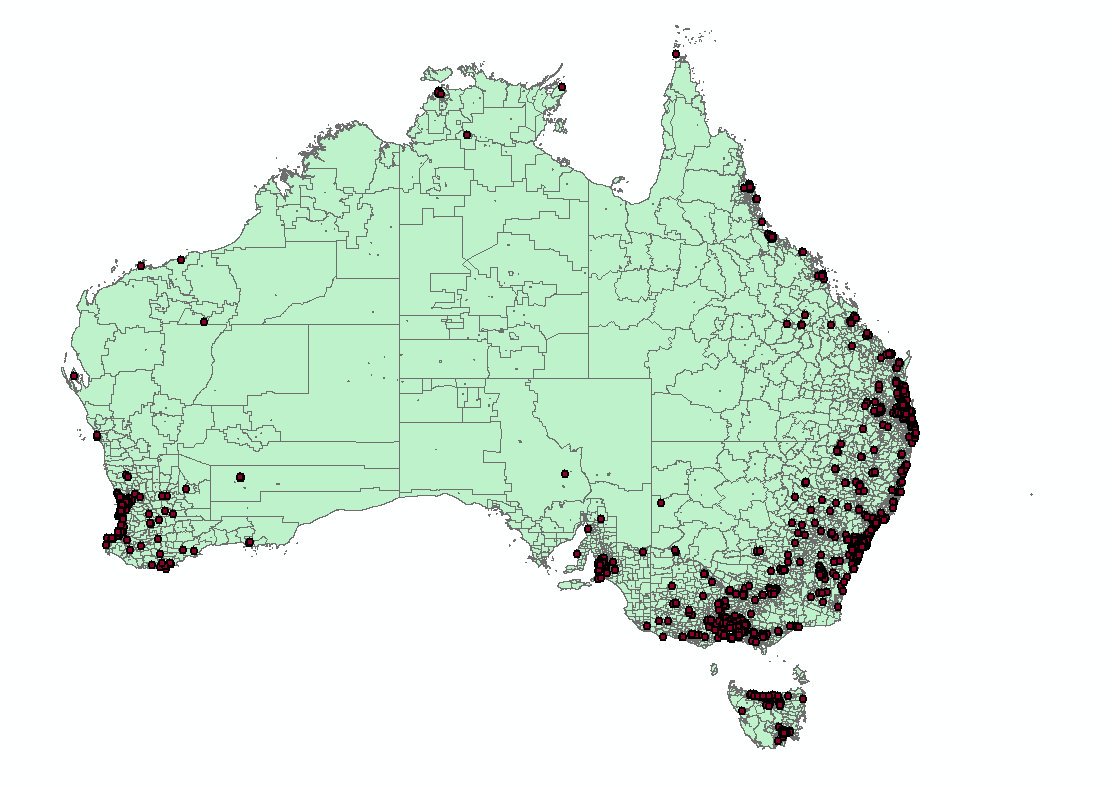Can the proximity of a student's home to their school have a bearing on their success? How much does the quality of air they breathe or neighbourhood crime rates affect their marks?
In an Australian-first, researchers at the University of New England are attempting to discover all this and much more by applying novel geo-coding techniques to the National Assessment Program for Literacy and Numeracy (NAPLAN) results of twins.
Postdoctoral Research Fellow Dr Callie Little said the major longitudinal behaviour and genetics study is investigating what influence genes and environmental factors have on school achievement. She is mapping and measuring distances between the geographical features within neighbourhoods, and overlaying the maps with NAPLAN results (a standard, if controversial measure of Year 3, 5, 7 and 9 performance) and other data to get a fix on which factors might be predictors of student success.
"Using geo-coding we can consider the distances between key locations and the influence - positive or negative - those distances might have," Dr Little said.
"Do students, for instance, have easy access to school and libraries, and, if so, does it boost their reading scores? If they live in a remote area and it's difficult to get to school each day, will that affect their overall attendance record? While not a direct measure, these geographical factors may be used as a proxy."
Improving education for Australian students is the primary aim of the research, however the conclusions Dr Little and her colleagues draw may also have applications for improved town planning and public transport design, and even guide family real estate purchases.
"If we find there is strong, evidence-based associations between certain factors, we can target them for further investigation," Dr Little said. "For instance, if features in the neighbourhood related to negative perceptions of safety - like a jail or homeless shelter correlate with crime statistics, we might look at recommending possible policy changes or school-based interventions."
More nuanced understandings of the environment in which students operate may pose other questions. "Does the pollution emitted by factories have a negative impact on a student's learning and development? Does the fact that a student has to transit a neighbourhood on the way to school where they feel unsafe negatively influence their school attendance? Students attending a school located beside an airport might experience class interruptions several times a day due to air traffic.
"These and the other factors we are investigating may have a negative, positive or no influence at all on achievement. However, all results can provide useful information to parents, students, and educational stakeholders by allowing us to pinpoint those factors that are important for achievement and those that are not.”
Using data collected during UNE's ground-breaking Australian Twin Study of the NAPLAN the first longitudinal study of the genetic and environmental influences on score variability ¬- opens up other dimensions. "Because of their genetic similarity and the fact that twins normally share the same home and school, we can use twins data to account for genetic influences, which are credited with approximately half the variation in NAPLAN scores and broader achievement measures," Dr Little said.
"That still leaves another half that is attributable to the student's environment, and these factors can potentially be changed to improve school achievement. Anything we can do to help children as early as possible is going to benefit their learning and broader society."
The inter-disciplinary research project draws from expertise in the fields of sociology, psychology, education, genetics and geography.
"Neighbourhood geography is often the last thing that people consider when they look at factors influencing mental health or school-based achievement," Dr Little said. "It's not often directly measured or examined for specific associations. But if we can identify factors that are systematically predictive, then we can determine the levers that needed to be adjusted, inform education policy and help kids to access resources that are really important to them."
Dr Little expects to compile her preliminary findings by mid-year.


